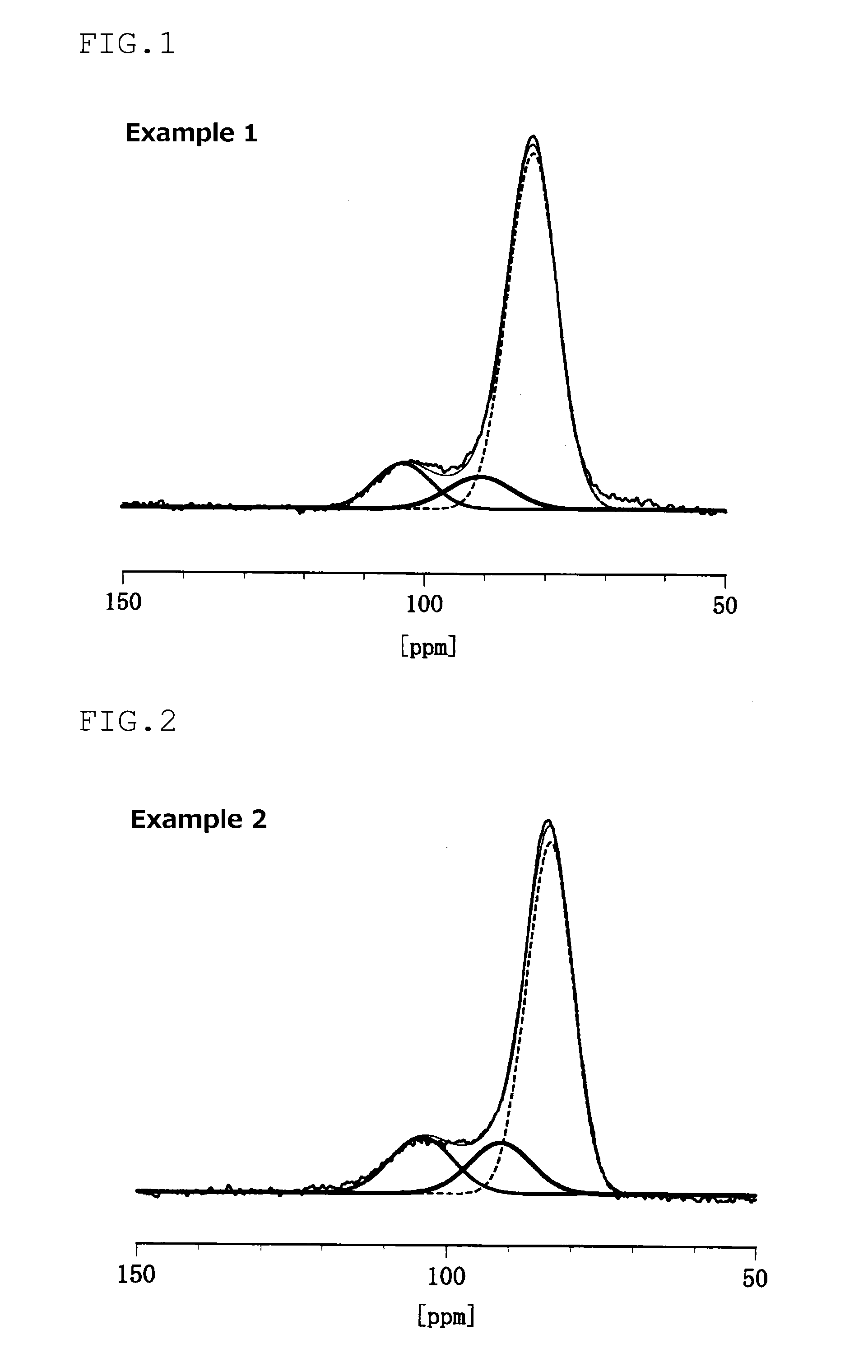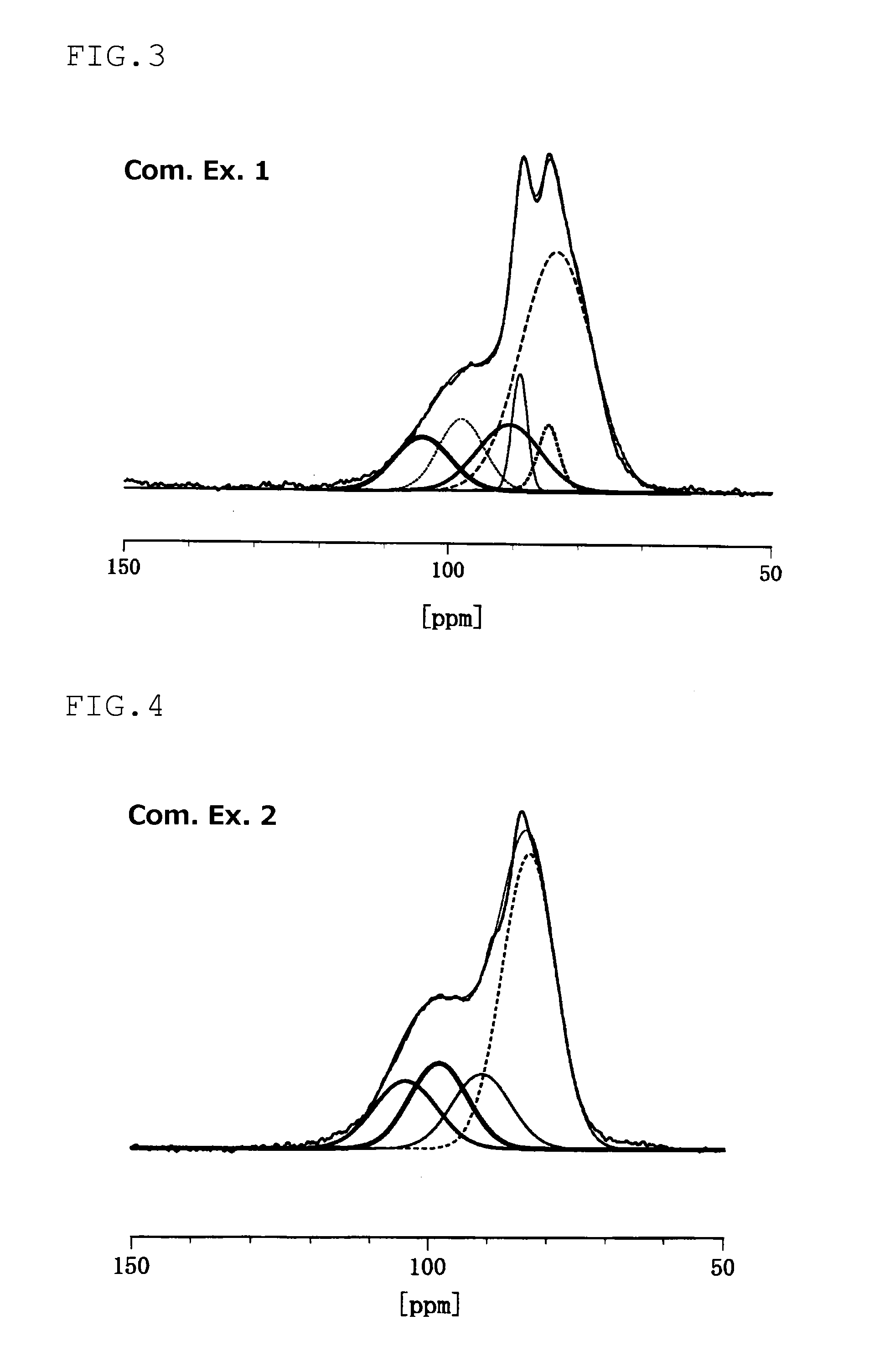Electrode material and lithium ion battery using same
a lithium ion battery and electrode material technology, applied in the direction of non-aqueous electrolyte cells, cell components, electrochemical generators, etc., can solve the problems of slow ion conductance in the electrode, leakage, ignition, etc., and achieve the effect of high-capacity all-solid lithium batteries and high-capacity batteries
- Summary
- Abstract
- Description
- Claims
- Application Information
AI Technical Summary
Benefits of technology
Problems solved by technology
Method used
Image
Examples
production example 1
(1) Production of Lithium Sulfide (Li2S)
[0157]Lithium sulfide was produced according to the method of the first aspect (two-step method) described in JP-A-H07-330312. Specifically, it was produced as shown below. 3326.4 g (33.6 mol) of N-methyl-2-pyrrolidone (NMP) and 287.4 g (12 mol) of lithium hydroxide were charged in a 10 liter-autoclave provided with a stirring blade, and heated to 130° C. at 300 rpm. After heating, hydrogen sulfide was blown to the resulting liquid at a supply rate of 3 liter / min for 2 hours.
[0158]Subsequently, this reaction liquid was heated under nitrogen stream (200 cc / min) to hydrodesulfurize a part of reacted hydrogen sulfide. With an elevation in temperature, water generated as a side product due to the reaction of the above-mentioned hydrogen sulfide and lithium hydroxide began to evaporate. The evaporated water was condensed using a condenser and removed to the outside of the system. The temperature of the reaction liquid rose while water was distilled...
production example 2
[0166]Solid electrolyte glass particles (average particle size: 68 μm) were produced in the same manner as in Production Example 1, except that Li2S and P2S5 (manufactured by Sigma-Aldrich Co. LLC.) were mixed such that the molar ratio became 75:25 and the heat treatment at 300° C. for 2 hours was not conducted.
[0167]Meanwhile, the recovery rate of the solid electrolyte glass particles was 82%. As a result of X-ray diffraction measurement (CuKα:λ=1.5418 Å) of the solid electrolyte glass particles, no peak for Li2S as a raw material appeared, and a halo pattern due to the solid electrolyte glass was observed. The ion conductivity of the glass particles obtained was 0.3×10−3 S / cm.
example 1
Preparation of Electrode Material
Positive Electrode Material
[0168]0.400 g of sulfur (manufactured by Sigma-Aldrich Co. LLC., purity: 99.998%) and 0.400 g of porous carbon (ketjenblack (KB) EC600JD, manufactured by Lion Corporation) were mixed in a mortar. After that, the resulting mixture was put in a sealable stainless container and then subjected to a heat treatment in an electric furnace to obtain a composite of sulfur and porous carbon.
[0169]The heat treatment was conducted as follows. The container was heated from room temperature to 150° C. at 10° C. / min and kept at 150° C. for 6 hours. Subsequently, it was heated to 300° C. at 10° C. / min and kept at 300° C. for 2.75 hours, and then naturally-cooled.
[0170]0.5 g of the composite of sulfur and porous carbon and 0.5 g of sulfide-based solid electrolyte powder prepared in Production Example 2 were put in a mill pot, and subjected to mechanical milling in argon at room temperature (25° C.) at a rotation speed of 370 rpm for 5 hours...
PUM
| Property | Measurement | Unit |
|---|---|---|
| diameter | aaaaa | aaaaa |
| diameter | aaaaa | aaaaa |
| thickness | aaaaa | aaaaa |
Abstract
Description
Claims
Application Information
 Login to View More
Login to View More - R&D
- Intellectual Property
- Life Sciences
- Materials
- Tech Scout
- Unparalleled Data Quality
- Higher Quality Content
- 60% Fewer Hallucinations
Browse by: Latest US Patents, China's latest patents, Technical Efficacy Thesaurus, Application Domain, Technology Topic, Popular Technical Reports.
© 2025 PatSnap. All rights reserved.Legal|Privacy policy|Modern Slavery Act Transparency Statement|Sitemap|About US| Contact US: help@patsnap.com


